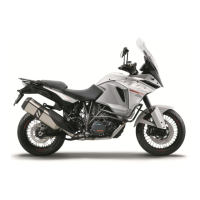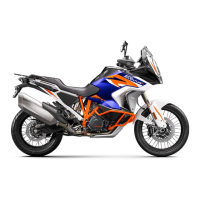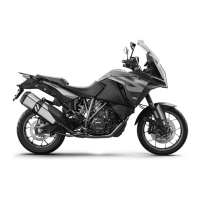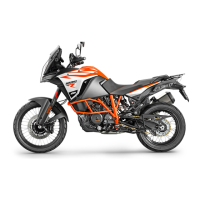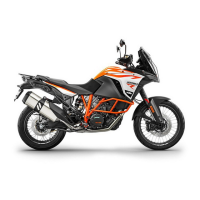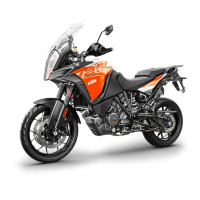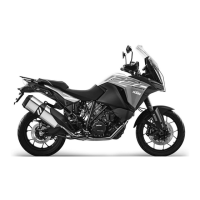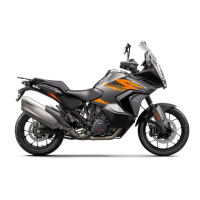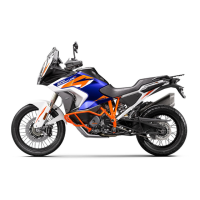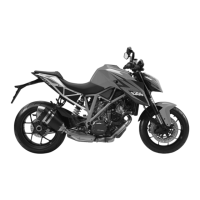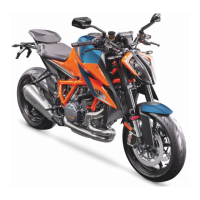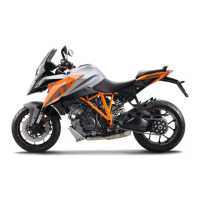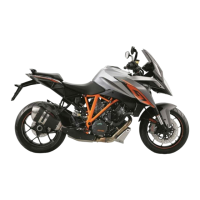16 ELECTRICAL SYSTEM 196
M00851-10
–
Plug connector
into the new headlight bulb.
Low beam (H11/socket PGJ19-2) ( p. 237)
–
Position headlight bulb
into the bulb socket and turn it all the way clockwise.
The headlight bulb is locked into the bulb socket.
Finishing work
– Install the headlight mask with the headlight. ( p. 193)
– Position the mask spoiler. ( p. 142)
– Install the wind shield. ( p. 150)
– Check the setting of the lighting system. ( p. 199)
16.11 Changing the high beam bulb
Note
Damage to reflector Reduced brightness.
– Grease on the lamp will evaporate due to the heat and be deposited on the reflector. Clean the lamp and keep it free of grease before
mounting.
Preparatory work
– Switch off all power consumers and switch off the engine.
– Remove the wind shield. ( p. 150)
– Loosen the mask spoiler. ( p. 140)
– Remove the headlight mask with the headlight. ( p. 191)
